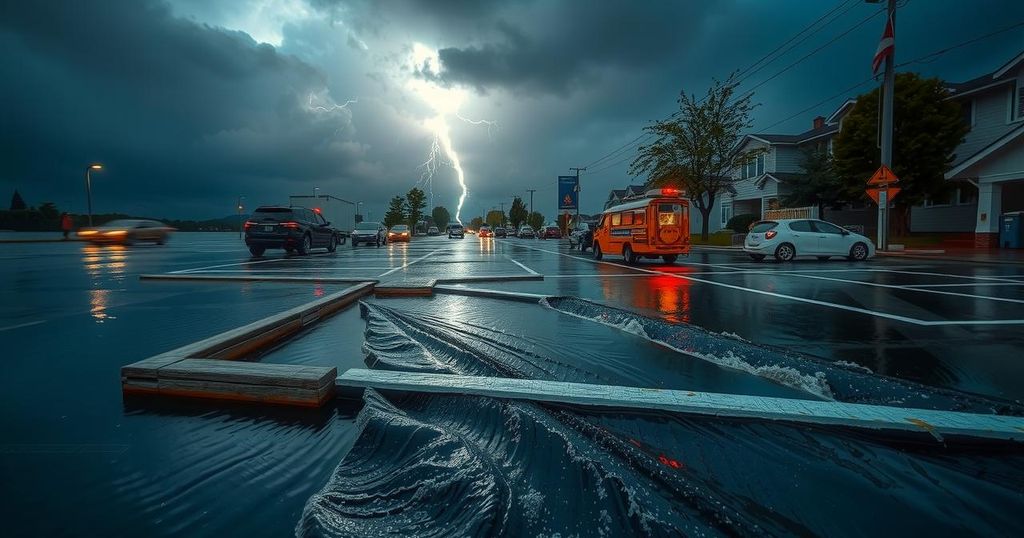A major storm system is affecting the central U.S., causing heavy snowfall in New Mexico and flooding and severe weather in the South. Over three feet of snow has been recorded, with flash flooding risks in Louisiana due to Tropical Storm Rafael. Wildfire risks remain in the West, and rain may provide limited relief to the Northeast drought.
A significant storm system is traversing the central United States, delivering a variety of severe weather outcomes, including heavy rains, severe thunderstorms, and substantial snowfall in the Rocky Mountains. This early season snowstorm has deposited over three feet of snow in parts of New Mexico, with Angel Fire receiving 40 inches in just 36 hours, while Las Vegas, New Mexico experienced record-breaking snowfall of 31.7 inches. In addition to New Mexico, other locations such as Rociada received 36 inches, Genoa, Colorado, saw 28 inches, and Colorado Springs reported 24.5 inches. Denver’s accumulation of 19.2 inches marks the third-largest November snowstorm recorded. Meanwhile, the Winter Storm Warnings across parts of Colorado were lifted as the weather calms down. Tropical Storm Rafael is currently positioned in the central Gulf of Mexico with sustained winds of 50 mph. Fortunately, this storm does not pose a threat of landfall as a severe system. However, the moisture from Rafael could lead to significant rainfall in the South, particularly Louisiana, where forecasts suggest up to 8 inches of rain and an elevated risk of flash flooding stretching into Kentucky. Additionally, the storm is generating hazardous rip currents along Gulf Coast beaches, with wave heights reaching 7 feet, prompting High Surf Advisories through the weekend and warnings of minor coastal flooding in Louisiana. Despite ongoing wildfires in the western United States, conditions in California have sufficiently improved to limit fire growth. Nonetheless, a Red Flag Warning remains in effect for parts of six northeastern states, due to strong winds and low humidity, which could exacerbate any new fires. Rainfall is expected to arrive in the Northeast by Sunday night, though it is unlikely to significantly alleviate the ongoing drought severity in the region.
The current weather conditions impacting the central and southern United States stem from a potent storm system producing varied severe weather, notably heavy snow and flooding rains. With unusual early-season snowfall recorded in New Mexico, historic levels have been reached in some areas, while the threat of flash flooding accompanies the moisture from Tropical Storm Rafael. Thus, understanding these weather patterns is crucial for mitigating risks associated with flash floods, wildfires, and extreme weather events throughout the region.
In summary, the ongoing storm system across the United States is manifesting in diverse weather conditions, particularly concerning heavy snowfall in the Rockies and flash flooding in parts of the South. While Tropical Storm Rafael adds complexity by introducing moisture leading to excessive rainfall, improving fire weather conditions in the West indicate a mixed picture. Awareness of these changing weather patterns is vital for preparedness and safety in affected areas.
Original Source: abcnews.go.com






